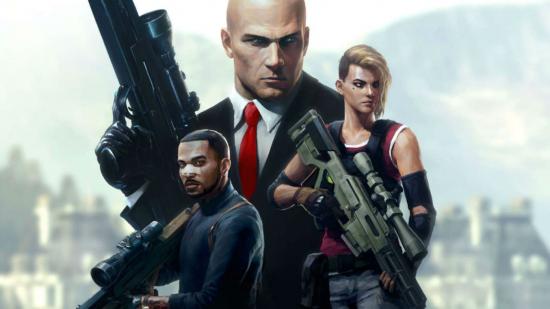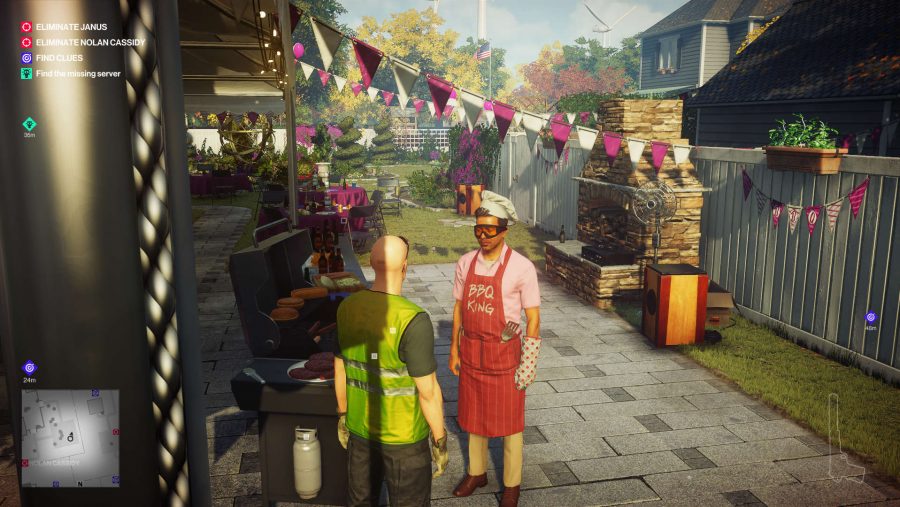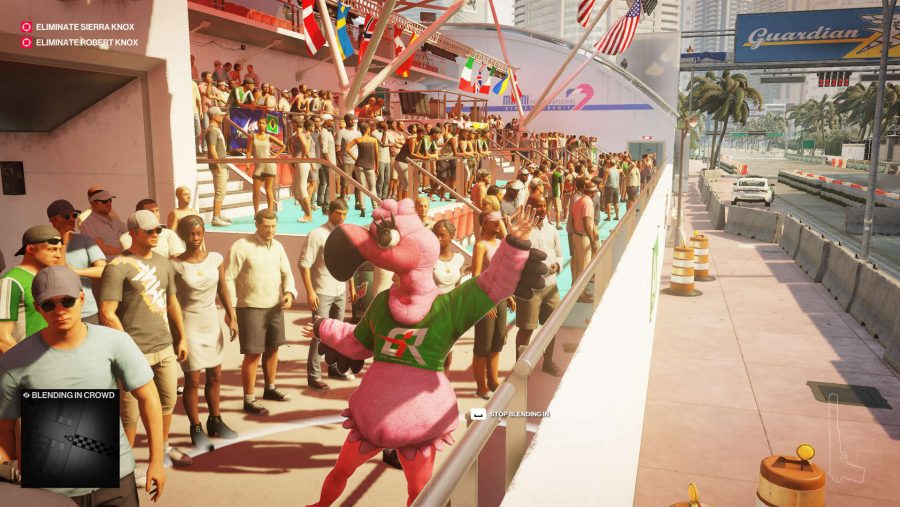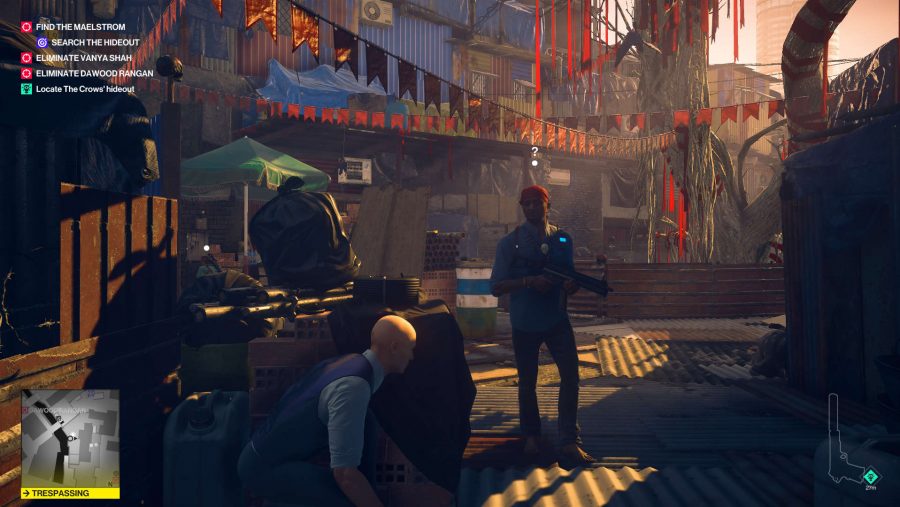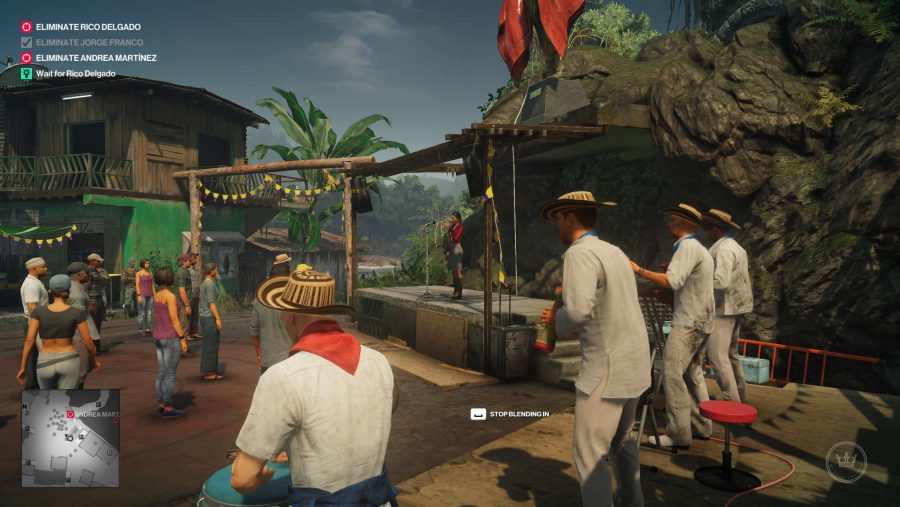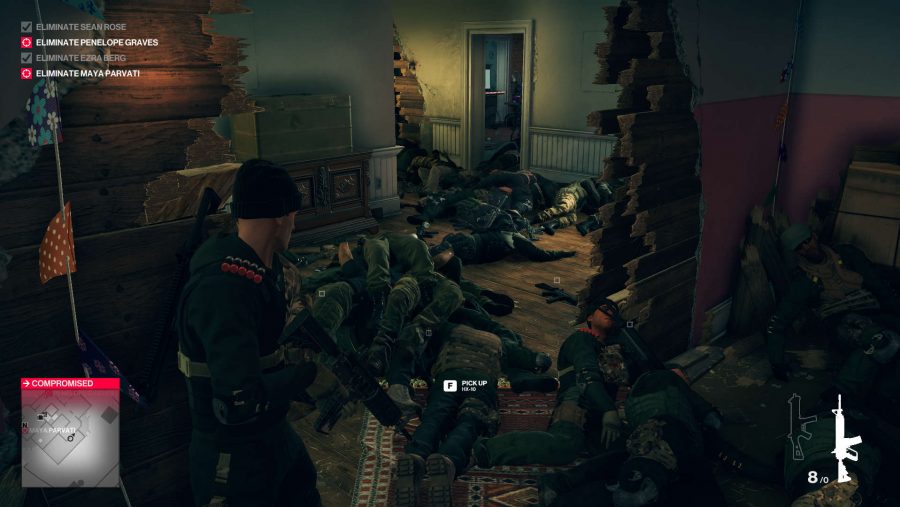Our Verdict
Introduces a wealth of meaningful new toys and systems, generously reshapes the first season with them, and then throws in a couple of sturdy multiplayer modes to boot.
Io Interactive has created a unique problem. The Danish studio’s previous Hitman game launched in six instalments, spread across seven months. It was a slow-burning release schedule that encouraged patience, focus, and meticulousness – key traits of any successful assassin – as players scoured each new location for every piece of intel, outfit, and all the possible ways to kill their marks. It showcased Io’s frankly astonishing attention to detail, the studio’s wry sense of humour, and the mind-boggling complexity of its intricate sandboxes.
Hitman 2’s levels, by contrast, come all at once. An overwhelming brute-force rush of content that leaves you reeling on first contact. Another six (mostly) sprawling levels, each loaded with dozens of challenges, two or three targets, and a whole heap of possibility. It’s a dizzying prospect that should, on paper, be met with elation.
But the game’s post-level recommendations to dip back in and attempt alternative Opportunities – now renamed Mission Stories – before moving on to the next level do little to dull the appeal of that ‘continue’ button. The result is a surface-level engagement on first pass as you blunder through the campaign in the traditional way, tempted ever onwards by the prospect of another shiny new sandbox. It’s a scattershot consequence that doesn’t sit well with 47’s sharp precision, and even sharper dress sense. Io, then, may have just become the first studio to draw ire for not locking away existing DLC in the initial download.
Of course, many players will have experienced the first game in this way anyway if their first contact with the rebooted series was 2017’s Hitman: The Complete First Season. But anyone who spent a full month sessioning Paris before the first game’s second episode was released will understand the difference an enforced, narrow focus can make. I mean, I can hardly be expected to exercise self control and only play the first level for four weeks straight, can I? I’m simply not that responsible.
It’s a real shame that Io has chosen to dilute the setup – a decision taken in response to players who wanted to experience the story in one go – because Hitman was a perfect fit for episodic release. The first game was an exemplar of the model that also actively benefited from it. Worse still, the sequel’s story – while presented in beautiful, very-well acted cutscenes – remains as poe-faced and forgettable as the first season’s, inexplicably forgoing the charm and humour found in the game’s narration.
Don’t worry, though: none of this is to say that Hitman 2 isn’t an absolute corker of a sequel. I’m a good 25 hours in at this point, having blasted through the lightly stitched-together campaign long ago, and am now ensconced in the meat of the game: obsessively unpicking each level and coming up with ever more elaborate and slick ways to off bad guys.
Hitman 2 offers up a procession of spectacular locations in which to do so. I played Miami and Santa Fortuna earlier in the year, but both stand up to prolonged inspection well. I’m still finding routes and squirreled-away corners that I didn’t realise were there in both locations, and you can happily lose an hour or two just wandering around drinking it all in before getting started on any of that killing business. Miami, especially, is a fine showcase for the Glacier Engine 2, and exudes the same sense of boundless potential that Sapienza did when it was first released. It’s a colossal, complex mess of characterful parts and memorable locations that, like Sapienza, will likely become the most popular setting for player-made Contracts missions.
It’s also a convincing demonstration of the game’s new blending-in mechanic, which lets you disappear into crowds to avoid detection by enforcers. A white circle appears around you to let you know you’re hidden whenever you stand in a group of people and, as long as vigilant NPCs don’t get too close, you can avoid detection. It makes for more organic stealth play as you surreptitiously follow your mark without having to resort to contextual prompts. You can even buy yourself a little anonymity simply by turning your back on a character that might recognise you – a small change that really sells the subterfuge fantasy.
Santa Fortuna has far fewer people milling around, but nods to the first season’s Colorado level with its oppressive armed forces presence – here, though, they aren’t all immediately hostile. It also sports a healthy crop of foliage, Hitman 2’s other new cover addition, in which you can crouch, stalk, and hide bodies to your heart’s content.
Before either of these levels, however, the campaign kicks off with Hawkes Bay. It’s a modest opener (if you don’t count the returning ICA Facility training missions), especially in the context of the first season’s dauntingly large Paris level. It takes place in and around a small house built on the New Zealand coast, and leaves plenty of room for creative murder – and some surprises along the way – but the prologue’s compact nature results in an unavoidably sparser experience.
At the other end of the spectrum is Mumbai, which 47 visits after Miami and Santa Fortuna are in the bag. It’s a huge space, featuring winding backstreets that recall those in Hitman’s Marrakesh level, an underground gang hideout, a film set in a half-finished skyscraper, and a cavernous converted train shed. It’s a striking demonstration of Hitman 2’s new lighting system, too, which regularly causes me to stop and just drink in the view. There doesn’t seem to be any real gameplay application to those high-contrast shadows, but it sure looks pretty.
Oh, and while we’re on Mumbai, it’s worth highlighting that this time around you don’t have to endure US accents in every location. Io has, quite rightly, introduced regional accents and dialects to its new levels, which makes for a more convincing tour of the world.
This improvement isn’t retrofitted onto the first season’s levels – which are available as Legacy Pack DLC, free to Hitman owners, as part of Io’s ever expanding World of Assassination – but they do get the crowd blending, foliage, lighting, picture-in-picture notifications, and working mirrors that so profoundly enrich the latest set of killing grounds.

The final two levels are US-based Whittleton Creek and the Isle of Sgàil, which lies somewhere in the north Atlantic. The former, while by no means bad, is Hitman 2’s weakest. It takes place – like Blood Money’s A New Life – in middle-class American suburbia, a setup that provides plenty of opportunity for mischief.
But while this 2018 rendition of eerie, Stepford Wives quietude is certainly atmospheric, and bitingly satirical at points, the map’s grid-based layout and repetitive house floor plans ultimately make for a more compartmentalised, less satisfying experience. Isle of Sgàil, meanwhile, is very much Hitman 2’s Hokkaido. It’s no spoiler to say that the sequel’s climax shares that level’s fascination with the off-kilter, disruptive nature of the super rich – and super powerful.
All of this is experienced through the filter of Hitman 2’s new three-tier difficulty system. Whereas the first season launched with one difficulty, and later gained Professional mode, Hitman 2 features Casual, Professional, and Master. The former is forgiving and good for toying with systems without fear of irreparable consequences, whereas Master allows only one save per attempt and will see your disguise immediately compromised by a bloody encounter. Best of luck with that one.
Io’s vision of an ever-improving, persistent Hitman hub is bolstered with two multiplayer modes, too. Sniper Assassin, already released as a pre-order bonus for Hitman 2, still only features one level but will be expanded over time. It’s a fine distraction that’s reminiscent of Konami’s Silent Scope series, and allows you to snipe alone or with a friend.
- Looking for a solid hiding: the best stealth games on PC
Ghost Mode, meanwhile, is a competitive 1v1 mode. Each player can see the other as a ghost, but play in their own instances of the level. The first to five unnoticed assassinations wins, and equipment is handed out from shared crates. Some items, like the ghost coin, can affect NPCs in both players’ worlds. I wasn’t able to find any opponents online while writing the review, but when I tried Ghost Mode at Warner Bros.’ offices recently it promised to be a great addition to the Hitman suite. On launch, only the Miami map will be available in this mode, but more will be added in the future.
Hitman 2 is a confident, charismatic sequel that further cements the rebooted series as a high-water mark for sandbox design – and Io’s reputation as leaders in the stealth genre. While Hitman 2, inevitably, can’t quite match the first season’s return-to-form impact, the intricacy of its levels and systems remains as surprising as it was back in 2016. The improvements it makes to the formula are delightful, and if you can manage to resist the urge to whip through the campaign in one gulp, the journey will be even more special.
